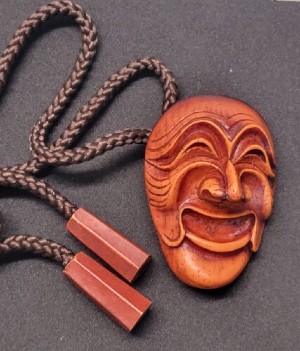Affiliate Disclaimer: We work to provide bolo ties and locate merchants who sell the products you are looking for. If you make a purchase from any of the merchants we endorse, we will earn a small commission at no additional cost to you. Thank you for your support!
Korean Bolo Tie Unmasking the Mystery of Korean Yangban Hahoetal Masks
Introduction
 Korean culture is steeped in rich traditions and art forms that have captivated the world for centuries. Among these captivating treasures are the fascinating Yangban Masks, which have a unique place in Korean history and performing arts. These traditional masks are not only aesthetically pleasing but also carry profound cultural significance, reflecting the dynamics of Korean society and the art of storytelling.
Korean culture is steeped in rich traditions and art forms that have captivated the world for centuries. Among these captivating treasures are the fascinating Yangban Masks, which have a unique place in Korean history and performing arts. These traditional masks are not only aesthetically pleasing but also carry profound cultural significance, reflecting the dynamics of Korean society and the art of storytelling.Origins and Meaning
The term "Yangban" refers to the Korean aristocracy during the Joseon Dynasty (1392-1897). The Yangban class held significant influence in politics, culture, and society. Yangban Masks, also known as "Hahoe Byeolsin Gut Tal," originated in the Hahoe village in Andong, South Korea. These masks played a pivotal role in the traditional Hahoe Mask Dance Drama, a ritualistic performance held to bring good fortune and ward off evil spirits.
Design and Symbolism
Each Yangban Mask features intricate craftsmanship that speaks to the skilled artisans who crafted them. The masks typically represent various characters, each with its unique features and expressions. The noble characters are depicted with small, narrowed eyes and sharp noses, while the servant characters have larger, rounded eyes and flattened noses. The designs not only showcase the social hierarchy but also reflect the moral virtues and flaws of the characters they portray.
Performance and Storytelling
The Hahoe Mask Dance Drama, where Yangban Masks shine, is a captivating performance blending dance, music, and storytelling. This traditional Korean art form is not just a mere display of talent; it serves as a medium to pass down cultural heritage and societal values from one generation to the next. The performances often involve humorous and satirical elements, providing both entertainment and social commentary.
Cultural Significance
Beyond their artistic value, Yangban Masks hold deep cultural significance in Korean society. They represent the rich history, customs, and traditions that have shaped the nation's identity. These masks are not just relics of the past but continue to be celebrated in various festivals, cultural events, and museum exhibitions, keeping the spirit of Korean heritage alive.
Preservation and Revival
While the traditional Hahoe Mask Dance Drama has undergone a decline during modern times, there have been efforts to preserve and revive this cultural treasure. Cultural organizations and local communities have been actively working to reintroduce these captivating performances to younger generations. In doing so, they hope to instill a sense of pride and appreciation for their heritage, ensuring that the legacy of Yangban Masks lives on.
Conclusion
Korean Yangban Masks are more than just artistic artifacts; they are a testament to the enduring spirit of Korean culture. Through their intricate designs and captivating performances, these masks provide a window into the past, offering a glimpse of the lives, beliefs, and traditions of the Korean people. As we continue to celebrate and preserve these cultural gems, we acknowledge the importance of embracing our heritage and passing it on to future generations, ensuring that the legacy of the Yangban Masks remains forever alive.

Korean Bolo Tie Yangban Hahoetal Masks
References
Cultural Heritage Administration of Korea - Intangible Cultural HeritageKorean Cultural Heritage Foundation (CHA)
Andong Hahoe Folk Village
National Museum of Korea
Korea Tourism Organization





